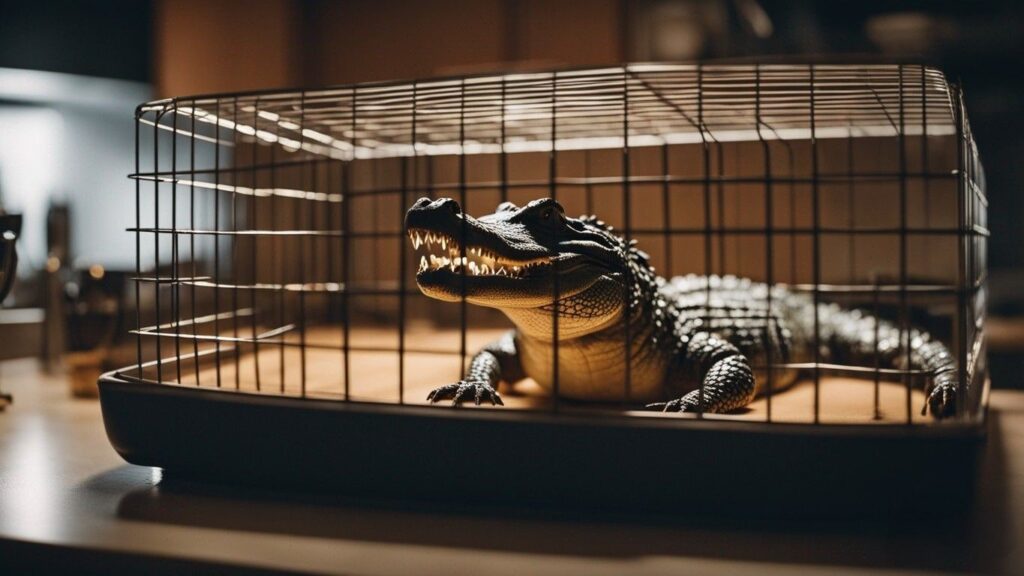
So, you’re wondering if you can have pet snakes in Australia? With its beautiful wildlife and diverse ecosystems, Australia might seem like the perfect place to have a slithery companion.
However, owning pet snakes in Australia is not as straightforward as you might think. Strict regulations and a focus on preserving the country’s unique biodiversity mean that not all snakes are allowed to be kept as pets.
It’s important to understand the legal requirements and potential risks before embarking on this unique and fascinating pet ownership journey.
Legal Regulations on Pet Snakes in Australia
The Relevance of State and Territory Laws
When it comes to keeping pet snakes in Australia, it is essential to understand and comply with the legal regulations set forth by state and territory laws. Each state and territory has its own specific rules and requirements regarding the ownership and keeping of snakes. These laws exist to ensure the safety and well-being of both the snakes and the community.
States such as New South Wales, Victoria, Queensland, South Australia, Western Australia, Tasmania, and the Northern Territory have their own legislation pertaining to pet snakes. These laws outline the species allowed for ownership, the permits and licenses required, housing and care requirements, importation and exporting regulations, and other essential guidelines. It is crucial to familiarize yourself with the laws specific to your location to avoid any legal issues or penalties.
The Importance of Permits and Licenses
In Australia, owning certain snake species may require obtaining permits and licenses. These permits help regulate the ownership and responsible management of these animals. The specific requirements vary depending on the state or territory, as well as the classification of the snake species.
Permits and licenses serve several purposes, including ensuring that owners have the necessary knowledge and skills to care for their snakes, preventing the illegal trade of protected and endangered species, and ensuring the safety of the community. By obtaining the required permits and licenses, you not only comply with the law but also demonstrate your commitment to responsible snake ownership.
Restricted Snake Species in Australia
The Classification of Venomous Snakes
Australia is home to numerous venomous snake species, some of which are highly dangerous and pose a significant risk to human health and safety. For this reason, many venomous snakes are restricted from private ownership. These restrictions are in place to protect both the general public and the snakes themselves.
The classification of venomous snakes varies among states and territories. Some common venomous snakes in Australia include the Eastern Brown Snake, Red-Bellied Black Snake, Taipan, and Tiger Snake. It is crucial to familiarize yourself with the specific laws in your area and understand which species are prohibited from private ownership.
Protected Native Snake Species
In addition to the restrictions on venomous snakes, Australia also has laws in place to protect and preserve native snake species. These snakes are an essential part of Australia’s ecosystem, and their conservation is of utmost importance. Depending on the state or territory, certain native snake species may be protected, and it is illegal to keep them as pets without the appropriate permits.
It is crucial to educate yourself about the protected native snake species in your area and understand the penalties for illegally possessing or harming these snakes. By respecting these protection laws, you contribute to the preservation of Australia’s unique biodiversity.
Permitted Snake Species for Pet Ownership
Common Snake Species Allowed as Pets
While some snake species are restricted or protected, there are still several snake species that are permitted for pet ownership in Australia. These species are typically non-venomous and pose minimal risks to human safety. Common snake species allowed as pets include the Centralian Carpet Python, Children’s Python, Stimson’s Python, and the Murray Darling Carpet Python, among others.
However, it is important to note that some snakes within these permitted species may require permits or licenses depending on their subspecies or locality. Always check local regulations and consult with local authorities or reptile experts to ensure you are in full compliance with the law.
The Importance of Checking Local Regulations
When considering pet snake ownership, it is essential to research and understand the local regulations in your area thoroughly. While some snake species may be permitted at the national level, individual states and territories may have additional restrictions or requirements.
By thoroughly checking and understanding the local regulations, you ensure that you are legally able to keep a pet snake and that you can provide it with the necessary care and accommodations. Failure to comply with local regulations can result in penalties, including fines and the confiscation of your pet snake.
Housing and Care Requirements for Pet Snakes in Australia
Enclosure Size and Structure
Providing a suitable enclosure is one of the most important aspects of snake ownership. The size and structure of the enclosure should reflect the snake’s natural habitat, allowing it to move, explore, and feel secure. Snakes require enclosures with adequate space, a secure lid or screen, and proper ventilation.
The size of the enclosure will depend on the species of snake you own. Research the specific needs and natural behaviors of your snake species to determine the appropriate enclosure size. Additionally, consider providing environmental enrichment, such as hiding spots and climbing structures, to ensure the snake’s physical and mental well-being.
Environmental Conditions for Optimal Health
Creating the right environmental conditions within the snake’s enclosure is crucial for its overall health and well-being. Temperature and humidity levels must be carefully monitored and controlled. Different snake species have varying temperature and humidity requirements, so it is essential to research and provide the appropriate conditions.
Most pet snakes require a thermal gradient in their enclosure, allowing them to thermoregulate and choose the temperature that suits them best. This can be achieved by providing a heat source at one end of the enclosure while keeping the other end cooler. Additionally, maintaining proper humidity levels, providing fresh water at all times, and ensuring a clean environment are essential for the health of your pet snake.
Feeding and Nutrition Guidelines
Feeding your pet snake a proper diet is essential for its growth and overall health. The dietary requirements vary depending on the species and size of the snake. Most pet snakes are carnivorous and will typically feed on appropriately sized frozen and thawed rodents.
It is important to offer a variety of prey items, providing the necessary nutrients for your snake. Consult with a reptile veterinarian or experienced snake owners to determine the appropriate diet and feeding schedule for your specific snake species. Regularly monitor your snake’s weight and adjust the feeding frequency and portion size accordingly.
Importing or Exporting Pet Snakes in Australia
Restrictions and Regulations on Importation
Importing pet snakes into Australia is subject to strict regulations to prevent the introduction of exotic and potentially harmful species. The Australian government has stringent biosecurity measures in place to protect the country’s unique biodiversity and prevent the establishment of invasive species.
If you wish to import a pet snake into Australia, you must adhere to the requirements set by the Department of Agriculture, Water and the Environment. These requirements include obtaining an import permit, meeting health certifications, and complying with quarantine procedures. It is crucial to thoroughly research and understand the importation regulations to ensure a smooth and lawful process.
Exporting Pet Snakes from Australia
If you plan to export your pet snake from Australia, you must also comply with specific export regulations. These regulations may vary depending on the destination country and its own importation requirements for snakes.
Before exporting your pet snake, it is essential to contact the appropriate authorities and obtain the necessary permits and documentation. This ensures that your snake meets the requirements of the destination country and can be legally transported.
Pet Snake Ownership Responsibilities
Relevant Training and Experience
Owning a pet snake comes with significant responsibilities. It is important to acquire the necessary training and knowledge to care for a snake properly. Familiarize yourself with the specific needs, behaviors, and health requirements of your chosen snake species.
Seeking guidance from experienced reptile owners, attending reptile care workshops, or consulting with reptile veterinarians are excellent ways to enhance your knowledge and skills. By investing time and effort into learning about snake care, you can provide your pet with the best possible care and ensure its well-being.
Providing Proper Care and Welfare
As a pet snake owner, it is your responsibility to provide proper care and welfare throughout the snake’s life. This includes meeting its dietary needs, maintaining adequate living conditions, and regularly monitoring its health.
Regular veterinary check-ups are crucial to identifying potential health issues early on and addressing them promptly. Additionally, ensuring that your snake has a clean and safe enclosure, opportunities for exercise and mental stimulation, and a stress-free environment are essential for its overall well-being.
Health and Safety Concerns when Owning Pet Snakes
Understanding Potential Risks
Owning a pet snake, like any animal, comes with certain risks. While the majority of pet snakes are non-venomous and pose minimal danger to humans, there is always a potential for accidents or bites. It is important to handle and interact with your snake safely and be aware of its behavior and body language.
Educate yourself on how to handle and restrain your snake properly to minimize the risk of injury. Always wash your hands thoroughly after handling your snake or cleaning its enclosure to prevent the transmission of bacteria or parasites. By understanding and mitigating potential risks, you can enjoy owning a pet snake safely.
Emergency Preparedness and Handling
In the event of an emergency or health issue with your pet snake, it is crucial to be prepared and know how to handle the situation. Establish a relationship with a reptile veterinarian who can provide guidance and emergency care when needed. Keep a first aid kit specifically designed for reptiles on hand and learn essential snake first aid techniques.
Furthermore, make sure you have the necessary contact information for local wildlife rescue organizations or snake catchers in case you encounter a snake outside of its enclosure. Being prepared and knowing how to handle different situations can make a significant difference in the health and safety of both you and your pet snake.
Educational and Therapeutic Benefits of Pet Snakes
Teaching Responsibility and Conservation
Pet snakes can serve as valuable educational tools, teaching owners and those around them about responsibility and conservation. Caring for a snake requires commitment, regular attention, and proper husbandry practices. By taking on the responsibility of owning a snake, individuals can learn essential life skills such as organization, time management, and empathy.
Additionally, snakes can spark an interest in wildlife conservation and habitat preservation. By educating others about the importance of snakes within ecosystems and dispelling common myths and fears, snake owners can contribute to a better understanding and appreciation of these fascinating creatures.
Snake-Assisted Therapy and Education
Snakes are increasingly being recognized for their therapeutic benefits in various settings, including therapy, education, and rehabilitation programs. Known as snake-assisted therapy or snake-assisted education, these programs utilize the presence of snakes to promote social interaction, personal development, and emotional well-being.
Interacting with a snake can help reduce anxiety, boost self-esteem, and improve communication skills, particularly in individuals with certain psychological or developmental conditions. Such programs can be of great help to those needing alternative methods of therapy or education.
Controversies and Opposition towards Pet Snake Ownership
Environmental Impact and Invasive Species Concerns
One of the main controversies surrounding pet snake ownership revolves around the potential environmental impact and the introduction of invasive species. In some instances, escaped or released pet snakes have established populations in the wild, posing a threat to native wildlife.
To mitigate these concerns, owners must take preventive measures to prevent escapes, such as providing secure enclosures and regularly checking for weaknesses. Responsible ownership and adherence to local regulations regarding pet snake care, containment, and reporting lost or escaped snakes are essential in preventing and minimizing the environmental impact.
Public Perception and Fear
Another aspect of controversy surrounding pet snake ownership relates to public perception and fear. Snakes often evoke strong emotions in people, primarily due to misconceptions, fear, and unfamiliarity. Some individuals or communities may hold negative views towards pet snakes, perceiving them as dangerous or unclean.
To address these concerns, it is essential for snake owners to educate others about snakes, their natural behaviors, and their importance in ecosystems. Sharing accurate information, dispelling myths, and demonstrating responsible ownership can help foster a positive perception of pet snakes within the community.
Successful Stories and Guidelines from Experienced Snake Owners
Insights and Tips from Experienced Snake Enthusiasts
Experienced snake owners can offer valuable insights and tips to those considering pet snake ownership. Their firsthand experiences can provide guidance on topics such as enclosure setup, handling techniques, feeding regimens, and general snake care.
It is recommended to connect with experienced reptile enthusiasts through local reptile clubs, online forums, or social media groups dedicated to snake ownership. Learning from their experiences and seeking advice can help ensure a smooth and successful journey into pet snake ownership.
Final Thoughts
In conclusion, owning a pet snake in Australia requires a comprehensive understanding of the legal regulations, regional restrictions, and responsible care guidelines.
By complying with the law, providing optimal housing and care, and promoting education and conservation, you can enjoy the rewarding experience of keeping a pet snake while contributing to the well-being of these remarkable creatures and the environment.



